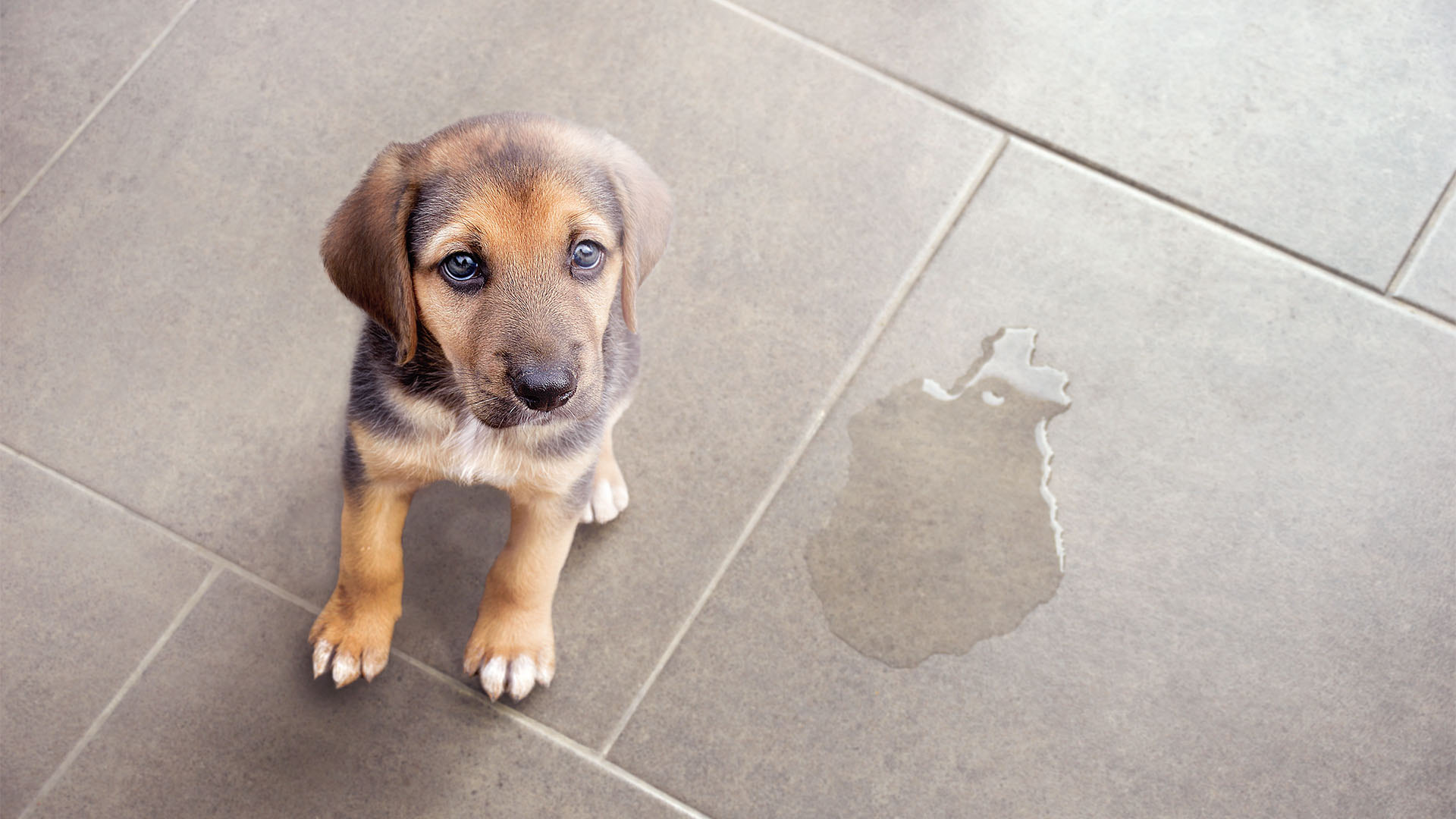 978.468.1616
978.468.1616
Looking for a Career in Dog Training? Learn More!

Before you even begin house training, it’s important to understand that dogs do not have any attachments or respect for carpet, hardwood floors or anything that we may use as a foundation in our homes which we would like to keep clean. Until you teach them, they don’t know the difference nor do they care where the appropriate place is to eliminate waste. In your dog’s mind, your carpet is the same as grass or any other place that will catch what is brought by that time of natural need.
Proper house training behaviors are much more than “where to do the business.” If you find that your dog has special needs, or the behavior continues after training; it could be signs of marking one’s territory or a sign of fear leading to a lack of control.
If you are training your puppy, effective house training takes continued repetition, which will help to strengthen your puppy’s bladder (and bowel) muscles. Keep in mind that it is natural for them not to want to eliminate waste near their feeding or sleeping areas. Taking your puppy to a specific location, at the same times each day, is the key to successful house training.
If used correctly, implementing a crate or confinement routine can ensure house training is accomplished in just a few weeks. However, if you got your puppy at a pet shop, chances are since they were not able to leave their confinement, it will be harder for them to develop the association of leaving their sleeping quarters to answer nature’s call.
With a combination of positive reinforcement and repetition, you will be well on your way to house training your new companion. Being consistent with how often and when you feed your dog is also vital to the success of house training your new best friend. It’s easier to recognize how far from feeding or drinking your dog takes to process and come to the moment when it needs to relieve itself. Prevention is key here.
Setting an alarm is a good reminder if you think it will help you to be more consistent with taking your dog out at certain times.
It’s recommended that you take your puppy out every two hours (maybe less) and always after they have eaten. It’s also a good idea for you to take them out after they’ve had a nap or even after playtime, as that can get things moving. Over time you can extend these intervals each day and not have to rely on them quite as often.
Adult dogs may be just as easy to train. Remember each dog is an individual and results from one dog can’t always be expected for all dogs. Even if you have trained your dog well, expect the unexpected. They are still living beings and not stuffed toys. Their bodies are complex, and they can get sick. It’s important that if your dog has an accident, for you to focus on the resolution, backed by positive reinforcement, not punishment. It’s not the dog’s intent to upset you by vomiting, urinating or defecating because they are sick, untrained or have lost control.
Think about where you want to do most of your house training. Make sure that if you cannot part with a cherished rug that has been in the family for years, to roll it up, and to be forgiving if there is an accident after you have placed the rug back. Be prepared to invest in renting or buying a steam cleaner with enzymatic products that are safe for you and your dog. Point is, you own a dog now and things are bound to get dirty, be torn up, and little presents will pop up from time to time. Be patient; remain calm and figure out what your pet is trying to tell you.
One factor that can cause your dog to not want to relieve itself is the weather. Maybe it’s just too darn cold, or maybe that heat is too painful on your dog’s paws. What is most comfortable and convenient may be on the forefront of their minds in this moment.
Consider when you really have to go… you go… So how do you know when they need to go?
Now you may be wondering about “pee pads”. If you want your dog to eventually go outside and not on the pads, you may want to consider not training your dog with them. Best practice is to train your dog where you ultimately would like for them to relieve themselves.
So, how do you decide where you want for your pet to go? You may be like many people who have limited areas for your dog to use. If you live in the city, with small dogs, you could consider a litter box, paper or a pee pad. In a backyard, try taking your dog to a specific corner of the yard. When kept clean, they will learn to respect the rest of your yard.
Walking your dog or taking them to a park may be less convenient, but a nice way for you to bond with your pet and for both of you to get more exercise. Leash training is a whole other process, but worth looking into if this is the option that you’d like to consider. It’s a matter of lifestyle but remember to consider what lifestyle you are imposing on your dog and that maybe your lifestyle isn’t appropriate for the needs of a dog.
